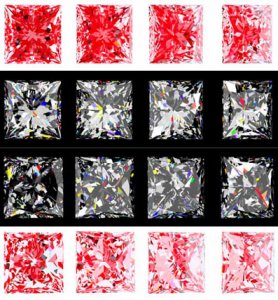Hi all,
Looking at the following stone:
Round Brilliant
7.50 - 7.54 x 4.49
Weight - 1.510ct
Total depth - 59.7%
Crown angle - 33.7
Pavil angle - 40.8
Pavil depth - 42.9%
Table size - 56.8%
Girdle thickness - 1.1% (0.8-1.2) [thin to med, faceted]
Polish/Sym: Ex/Ex
Color: F
Clarity: VS2
Culet: none
Flour: faint
As you can see, the total depth is slightly under the 60% that I believe is the low-end for the ideal cut, but the HCA score is a very solid 0.8 (EX/EX/EX/EX).
Should I have reservations given that it''s not quite ideal? Also, any worries about fain flourescence?
Thanks,
CB
Looking at the following stone:
Round Brilliant
7.50 - 7.54 x 4.49
Weight - 1.510ct
Total depth - 59.7%
Crown angle - 33.7
Pavil angle - 40.8
Pavil depth - 42.9%
Table size - 56.8%
Girdle thickness - 1.1% (0.8-1.2) [thin to med, faceted]
Polish/Sym: Ex/Ex
Color: F
Clarity: VS2
Culet: none
Flour: faint
As you can see, the total depth is slightly under the 60% that I believe is the low-end for the ideal cut, but the HCA score is a very solid 0.8 (EX/EX/EX/EX).
Should I have reservations given that it''s not quite ideal? Also, any worries about fain flourescence?
Thanks,
CB






300x240.png)